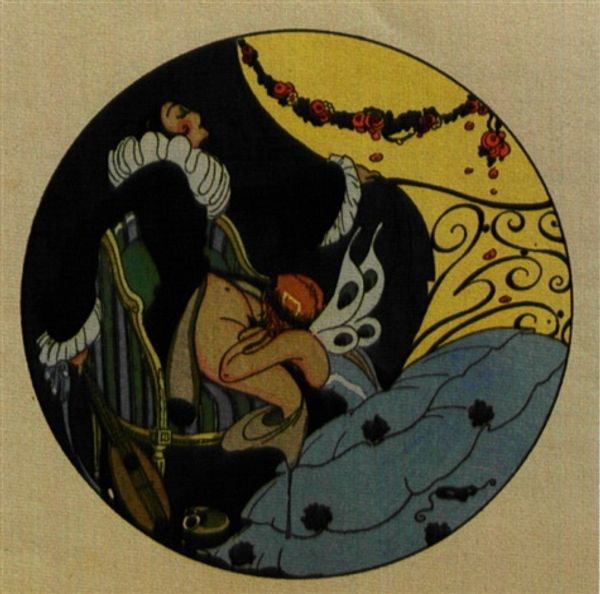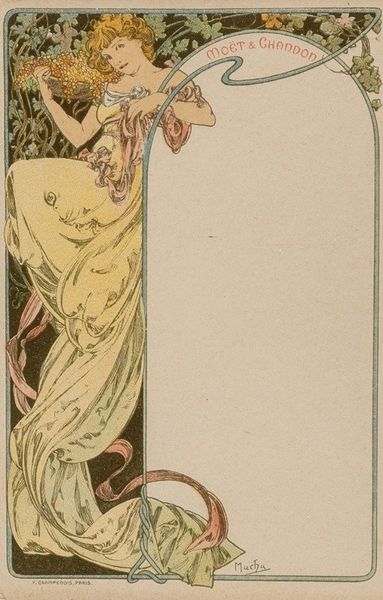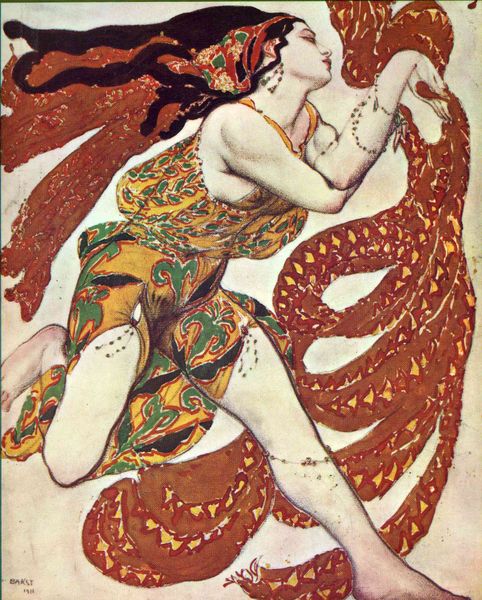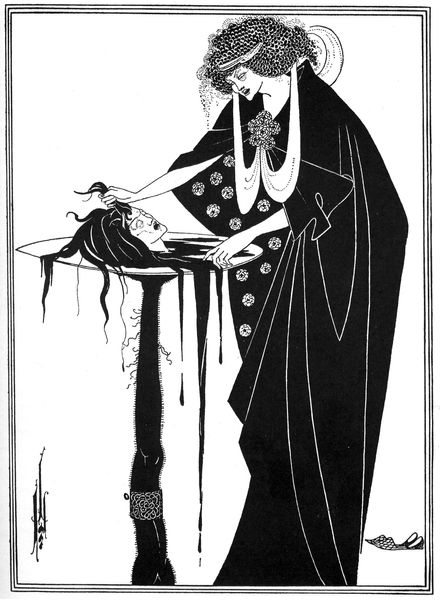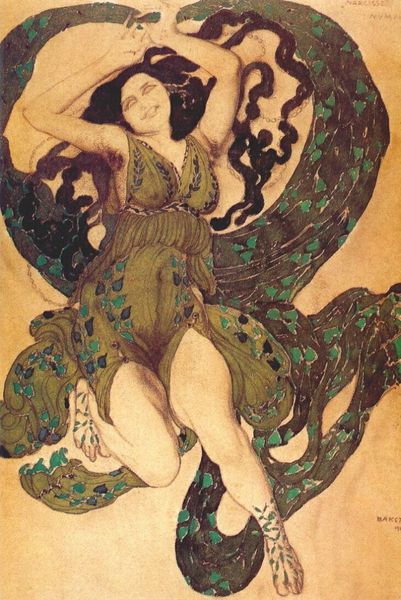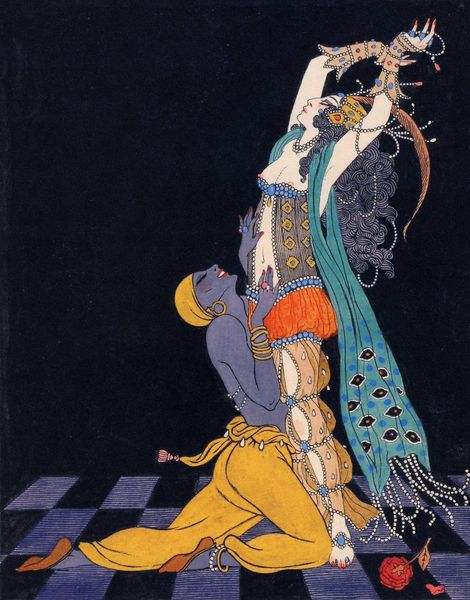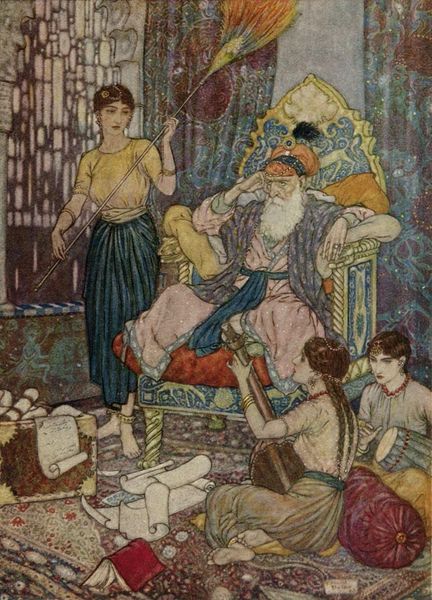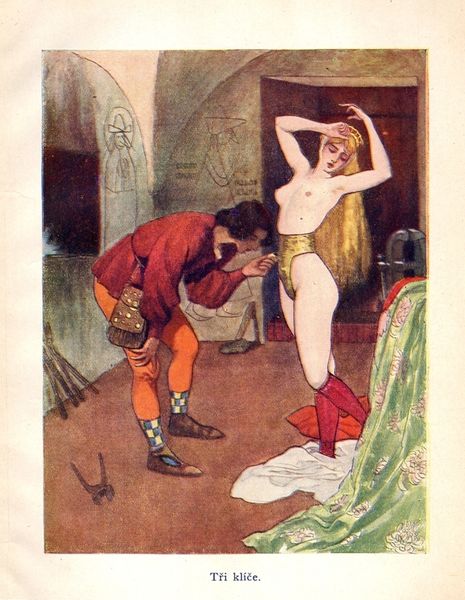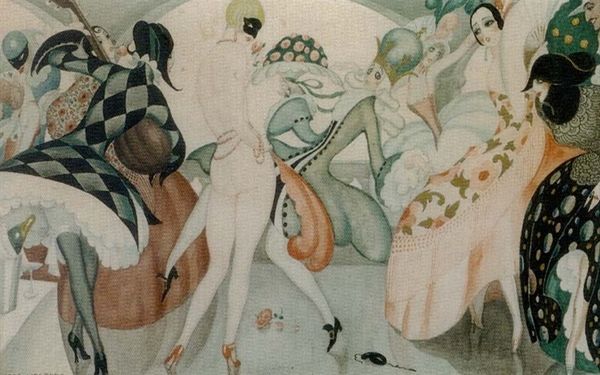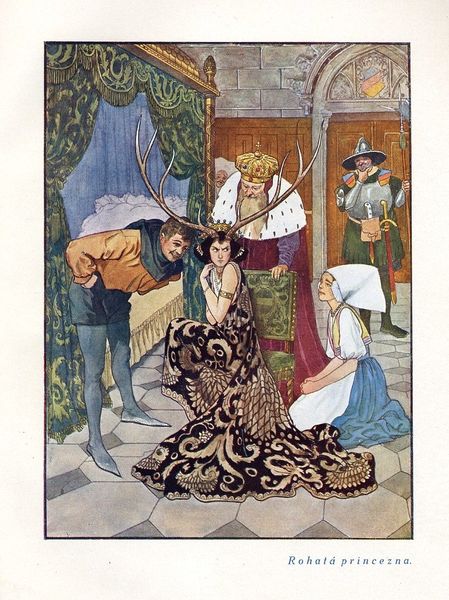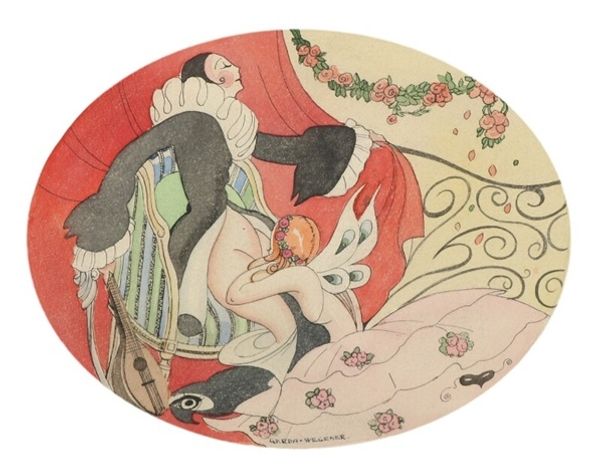
watercolor
#
art-nouveau
#
caricature
#
caricature
#
watercolor
#
intimism
#
genre-painting
#
nude
#
erotic-art
Copyright: Public domain
Curator: Oh, this piece certainly demands a closer look. Here we have Gerda Wegener’s "Cuckoo," created in 1920 using watercolor. What is your first reaction to it? Editor: The composition is immediately striking. It's suggestive, almost performative. I’m drawn to the materials. The sheen of watercolor gives it an airy lightness, playing nicely against the subject matter. Curator: Precisely. Wegener, in this piece, explores the female nude in a way that intersects with the social liberties that defined the roaring twenties, offering commentary on gender, sexuality, and power. It's daring for its time. Editor: And daring considering her life. Isn’t it fascinating how Wegener's work challenges the established boundaries of ‘high art’? She wasn't afraid to portray intimacy and sensuality, topics often relegated to more private or "lesser" forms of artmaking. Also notice the chair upholstery, and the rococo wigs which signify status, privilege and perhaps even the labour and processes behind that privilege. Curator: The setting is carefully arranged, filled with the iconography of wealth and status, certainly. We see a commentary on performative femininity, maybe even an eroticization through clothing. It begs us to question the male gaze, when there are no men visible within the picture at all. Editor: The use of watercolor, a seemingly delicate medium, lends itself beautifully to this sort of intimate genre painting. Consider the labor invested in even seemingly ephemeral arts of her time: the careful choice of pigments, the social context of buying art supplies, these actions are inherently social acts. How it can serve to shape perception or enforce ideas regarding taste and status is important to address. Curator: It also touches on Art Nouveau aesthetics and caricature. The curves, the exaggerated forms…they all converge to present a rather unique commentary on societal expectations. There are obvious class disparities at play and intimations of love and betrayal, which is heightened by the cuckoo motif of the title. Editor: And that stylistic approach gives it a certain edge. The caricature hints at societal critique, a subtle rebellion within the frame itself. This almost flippant mode underscores what are very much careful choices on Wegener’s part. It elevates the labor as well as draws attention to Wegener as an artist. Curator: Wegener's "Cuckoo" reveals so much about gender, class, and the visual language of desire in the early 20th century. Her personal context certainly shaped her subjects. Editor: Absolutely. "Cuckoo" is much more than a watercolor on paper; it's a testament to the ways material culture, technique and social context interweave within art production.
Comments
No comments
Be the first to comment and join the conversation on the ultimate creative platform.

